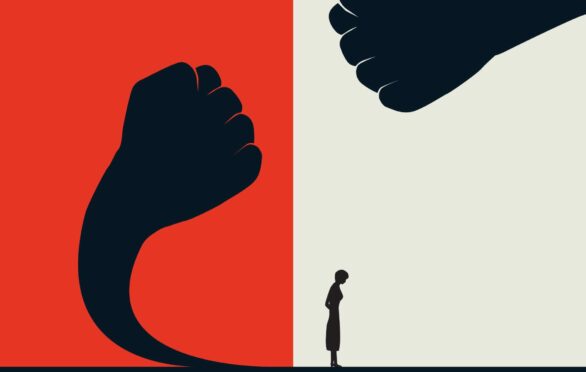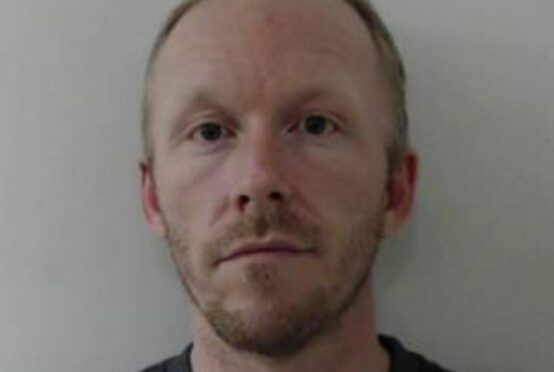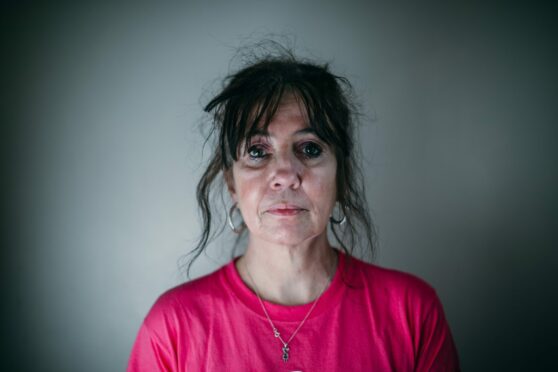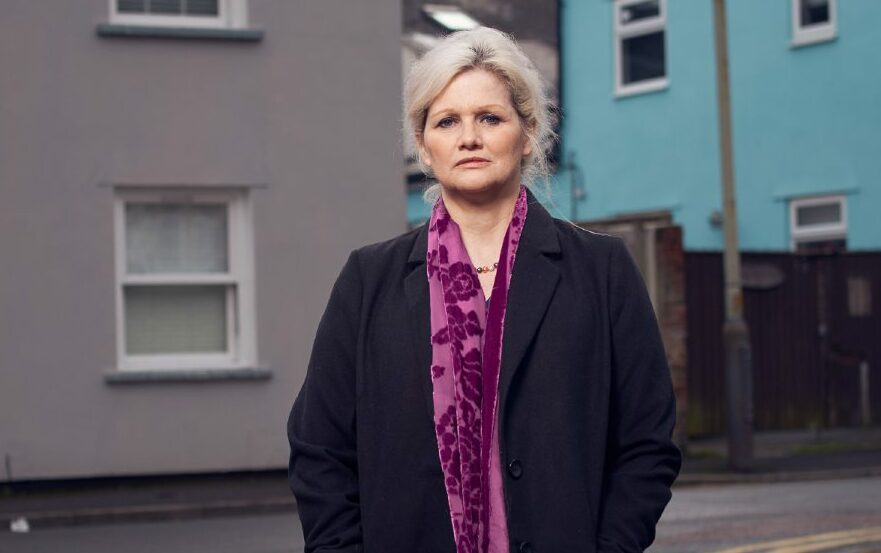
He lost control, people say after another woman is killed. He just snapped, they say after another wife, partner, or girlfriend dies because of male violence.
According to Professor Jane Monckton Smith, however, he didn’t lose control, he didn’t just snap and, in a life-saving book, she explains why there are patterns of escalating domestic abuse that repeat again and again and, often, tragically, end in death.
A woman is killed by her partner or ex every four days in the UK but the domestic homicide expert fears there may be many more with suspicious deaths going uninvestigated because of basic misunderstandings of the forces at play in domestic violence and how violent and abusive men cycle through identifiable and escalating stages of control and coercion.
The idea that previously ordinary men suddenly commit terrible violence is widespread but wrong, says Monckton Smith. She believes many domestic abusers are hiding in plain sight and more could be identified and stopped with better awareness and understanding of their personalities and behaviour.
Every year for the last five years, 13 women have been killed in Scotland with around half of those recognised as victims of previous abuse but Monckton Smith, one of the UK’s leading experts in domestic violence, says up to 80 other deaths, often said to be suicide, may be linked to domestic abuse.
The criminologist, a former police officer turned academic, said: “All sudden unexpected deaths or suicides where there is a history of domestic abuse should be investigated as potential murder until proved otherwise.
“Based on the evidence I’ve already seen by investigating such cases up and down the country, there are potentially hundreds of missed homicides every year.”
She says manipulative abusers are not only getting away with murder but are also driving victims to take their own lives in what she described as a scandal of “hidden homicides”.
Her acclaimed book, In Control: Dangerous Relationships And How They End In Murder, details eight stages of coercive behaviour leading, ultimately, to homicide or suicide and how police and prosecutors must be better informed to ensure clear patterns of behaviour are not missed and ensure vulnerable women do not remain at risk.
This week, publisher Bloomsbury, in partnership with The Sunday Post, will send a copy of the book to every MSP and Scotland’s most senior law officers, the Lord Advocate Dorothy Bain, and Solicitor General Ruth Charteris. They have promised to improve conviction rates for crimes of male violence while reviewing how victims are treated in Scotland’s justice system.
We revealed last year how 7,000 cases of domestic violence were stalled in the country’s log-jammed courts and last week it emerged women were dropping cases because of the delays in seeing justice done. Monckton Smith believes a sea change is demanded in the awareness of the true nature of domestic violence and the systems in place to protect women at risk. She hopes Scotland can implement fundamental change in how these crimes are investigated and prosecuted.
She said: “Scotland has led the way with the introduction of new coercive control laws but can do even more. There remains widely held but damaging misconceptions about the nature of domestic abuse and the men who inflict it.
“There remains an idea that these are somehow crimes of passion committed by men losing control. That is false and the longer that misconception is allowed to stand the longer it will be before the authorities take effective action to prosecute these men and protect their victims and their potential victims.”
Among the changes she believes will help are the establishment of Domestic Homicide Reviews which have been in operation in England since 2016. Led by an independent expert, the actions of all agencies including police and social services who have had contact with a victim who has died as a result of domestic abuse are reviewed to learn how to improve services, with the option to report cases to oversight bodies as required.
She said all sudden deaths and suicides where there is evidence of domestic abuse or control should be investigated as murder until proved otherwise, and those deaths should be counted in official statistics. She is calling for only specially trained officers to be first responders to all call-outs where domestic abuse is suspected, and for extra training to be given to judges and prosecutors to help them recognise signs of coercive control, violence and threats masked by manipulative perpetrators.
The professor warns the most dangerous time for victims comes when their abusers realise they are planning to leave. As a result, she is calling for independent domestic abuse advocates to accompany police officers when they issue warnings about an abuser’s past offending.
Monckton Smith said: “This is by far the most dangerous point, and while some police forces in England already do this, not every force brings an independent domestic abuse advocate with them when they issue these warnings about a partner’s past. It’s simply unthinkable that such information is passed on, and the potential victim left to try and take it in alone.”
After 30 years studying male violence against women and girls, Monckton Smith wrote her book to chart the predictable, escalating patterns of a crime she described as “every bit as serious as terrorism but with millions more victims”.
She said: “Domestic abuse should be given the same seriousness and level of investment that we give to preventing terrorism, and we need to get real about its impact on society.
“One of the reasons why so many perpetrators are getting away with it is because society is guilty of believing the myths, often suggesting brutal murder is some crime of passion or mercy killing. It’s not.
“Around 80% of domestic abusers who kill use some level of planning before they act. They haven’t been overcome by an overwhelming emotion and suddenly snapped. The same goes for those who killed sick or disabled partners. Often described in court as ‘mercy killings’ as if the killer was so caring they took their partner’s life to spare them suffering. That is just nonsense.
“We need to wake up and understand that the victims in those cases are likely to have led lives where they have been coercively controlled and subjected to threats and violence.”
Monckton Smith, professor of public protection at the University of Gloucestershire, fears up to a third of the 230 female suicides in Scotland last year may have been hidden homicides or victims actively driven to their deaths by abusers. She said: “A much closer examination of these lives is required to establish if there has been a history of domestic violence, abuse or coercive control. And if there is, then you are much more likely to be looking at homicide than someone pushed to suicide.
“A pill overdose may be put down to someone who is depressed or suffering mental health issues, and a manipulative abuser will make a big thing of that, victim blaming, maybe to cover up forced ingestion.
“Domestic abuse victims are often identified by agencies as having alcohol or drug abuse problems instead of them recognising core abuse as the central problem. That simply aids perpetrators who will flag that up to divert attention from their own behaviour.”
A Home Office report into 32 unexpected deaths over the past seven years which police marked as non-suspicious were re-examined by forensic pathologists. Half were shown to be wrong. Ten were ruled to be killings and a further five were deemed suspicious.
Monckton Smith also believes there should be robust prosecution of abusers whose behaviour drives victims to take their own lives.
She said: “Those lives should be counted because those victims counted. We need to be able to prosecute those abusers who currently get away with what they are doing, and the courts and criminal justice system need to be more open to taking on those cases.”
Scotland’s most recent crime figures show a spike in the number of female homicides in the first three quarters of last year, 12, compared to five for the same period the year before. Over the past five years Scotland has seen around 13 female homicides a year, and according to police records, around half have a recorded history of suffering abuse.
But the level of domestic abuse is far higher than records suggest and Monckton Smith fears society is still failing to address the scale and toll inflicted. She said: “The real damage this crime causes has never been adequately reflected in the sentences handed out by courts, or in the crime figures we see rising year in, year out. The effects are devastating and lifelong for victims and children exposed to it.
“Despite that, we don’t have nearly enough resources spent on domestic abuse, or nearly enough specialist officers and services to investigate these crimes and support victims.
“When incidents are attended by police, it’s most often done by frontline responding officers who don’t have the specialist training needed. We need to invest in and train enough specialist officers to handle all call-outs where domestic abuse is suspected so the signs of escalation are recognised immediately.
“They need to be able to identify when a manipulative perpetrator is lying about a partner who accidentally took too much medication, or whether a victim was forced to take it.
“Alarmingly, I’ve investigated far too many cases which have been put down to suicide when they are in fact murder and the response to call-outs is critical. I’ve seen many cases being reinvestigated and then found to be murder, and I’m working with around 15 families in this situation right now.
“From my own years of experience in this field and research collected by others, I believe between a quarter to a third of female suicides could be directly related to domestic abuse.”
She believes these type of killers meticulously plan their murders, even putting together toolkits and maps and sometimes even sharing plans with unsuspecting friends. She said: “It can be one of the final signs leading up to a homicide. People should never ignore comments from someone saying they’d like to do this or that to their wife or partner.
“These killers will often make a remark like that but it’s not black humour, it’s what they are actually planning to do.”
When a partner becomes infirm, suffering a long-term illness or disability, courts should never simply accept a homicide is a mercy killing, according to Monckton Smith. “I’ve even known of abusers who have deliberately taken their partner out of a care home to kill them. That’s got nothing to do with mercy. It’s cold and calculating. I’ve known controlling partners who feel their place of authority is being overshadowed by doctors or social workers to take back control by killing their wives.
“Their lawyer will argue it’s been a mercy killing but with the proper training, a judge should disregard that because they have recognised the history of control and impose the appropriate sentence.”
Eight steps to murder
In her book, In Control, Jane Monckton Smith identifies a recurring pattern of eight escalating stages in abusers’ behaviour that can, if unidentified and unhalted, lead to death.
A history of control or stalking
Abusers have often done it before and will do it again
The commitment whirlwind
Lovebombing and demanding commitment
Living with control
Mental coercion with or without additional violence
Trigger
Leaving or threatening to leave is one of the most dangerous triggers
Escalation
Existing controlling and stalking patterns gather momentum
A change in thinking
Abuser decides the situation is irreversible
Planning
Means and opportunity to “punish” his partner becomes a priority
Homicide
Unhalted, the cycle of control will lead to death by murder of suicide
From the book: Why won’t she get into the ambulance? I wanted an answer
It was eight o’clock in the evening and already dark when we arrived at the address, a Victorian building that had been split into flats. The flashing blue lights of the ambulance sparkled through the misty night rain, lighting up the open front door of the house and creating an uncomfortable eeriness in the quiet suburban street, writes Professor Jane Monckton Smith in the prologue to In Control.
I was a newly qualified police officer, still in the first weeks of patrol duties, attending a 999 call with my supervising sergeant. We were coming towards the end of a long, hard shift and were due to finish around 10 that evening. All we knew as we walked into that building was there had been reports of an assault. I remember very clearly being warned by an experienced detective that the most dangerous calls I’d attend would be so-called “domestics”. The detective had suffered a serious injury at one of these calls and I was thinking about this as I peered into the dim stairwell.
We climbed to the first floor and entered the living room of a cold, tidy apartment. The furniture and decor were a blur to me in comparison to the blank, staring face of the young, red-haired woman, who was probably no more than 18 years old, sitting calmly on a chair surrounded by ambulance staff. She had been hit on the head with a lump hammer. Her boyfriend – her assailant – had fled the scene. The woman was simply gazing at the floor, quiet and very still. There was blood trickling down the back of her neck and on to the carpet. The paramedics were trying to convince her to go to hospital with them but she soundlessly refused and nothing would persuade her. As a young woman myself – barely 20 and fresh out of police training school – I stood perplexed, listening. I could not understand why any human being would refuse medical care, especially if their life was in danger.
The static crackling voices on our radios intruded on the pretence that we could stand there all night trying to convince her to do something. We could see that there was no way she was going to help us prosecute her assailant. And so we left her there, sitting alone, staring at the blood-spattered floor and went about our increasingly pressing business – me, my sergeant, and the paramedics – powerless and frustrated.
“Why?” I remember asking my sergeant. “Why won’t she get in the ambulance? I don’t understand.” “Get used to it,” he replied, sighing. “It’s what they’re like.” By they, he meant victims of domestic abuse. He was not an unkind or an uncaring man: this belief – that victims of abuse behave differently to “normal” people – arose not out of a lack of sympathy; it was just his experience of domestic violence calls. He was used to seeing victims refuse help, often time and again. He, like many others before and after him, made the assumption that as an adult woman, she had the ability and the choice to just get up and leave. He likely also assumed that getting up and leaving would free her from the abuse and from the abuser, leaving her emancipated – safe. So he thought this person, and others like her, were not acting as any normal person would or should.
I didn’t see the young woman again but I never forgot her. The question I asked my sergeant has haunted me ever since. I wanted an answer to that question.
In Control: Dangerous Relationships And How They End in Murder, by Jane Monckton Smith, is published by Bloomsbury

Enjoy the convenience of having The Sunday Post delivered as a digital ePaper straight to your smartphone, tablet or computer.
Subscribe for only £5.49 a month and enjoy all the benefits of the printed paper as a digital replica.
Subscribe




